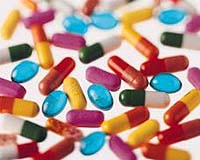 |
Boston MA (SPX) Apr 14, 2011 Some 25 million people in the United States alone suffer from rheumatoid arthritis or its cousin osteoarthritis, diseases characterized by often debilitating pain in the joints. Now researchers at Brigham and Women's Hospital (BWH) report an injectable gel that could spell the future for treating these diseases and others. Among its advantages, the gel could allow the targeted release of medicine at an affected joint, and could dispe nse that medicine on demand in response to enzymes associated with arthritic flare-ups. "We think that this platform could be useful for multiple medical applications including the localized treatment of cancer, ocular disease, and cardiovascular disease," said Jeffrey Karp, leader of the research and co-director of the Center for Regenerative Therapeutics at BWH. Karp will present the findings April 15 at the annual meeting of the Society for Biomaterials (SFB) as part of winning the coveted SFB Young Investigator Award for this work. The work was also reported by Karp and colleagues in the May 2011 issue of the Journal of Biomedical Materials Research (JBMR): Part A, and is currently available on the journal's website.
Local Delivery "There are many instances where we would like to deliver drugs to a specific location, but it's very challenging to do so without encountering major barriers," says Karp, who also holds appointments through Harvard Medical School (HMS), Harvard Stem Cell Institute (HSCI), and the Harvard-MIT Division of Health Sciences and Technology (HST). For example, you could inject a drug into the target area, but it won't last long--only minutes to hours--because it is removed by the body's highly efficient lymphatic system. What about implantable drug-delivery devices? Most of these are composed of stiff materials that in a dynamic environment like a joint can rub and cause inflammation on their own. Further, most of these devices release medicine continuously--even when it's not needed. Arthritis, for example, occurs in cycles characterized by flare-ups then remission.
Toward the Holy Grail His coauthors are Praveen Kumar Vemula, Nathaniel Campbell, and Abdullah Syed of BWH, HMS and HSCI; Eric Boilard (now at Universite Laval), Melaku Muluneh, and David Weitz of Harvard University; and David Lee of BWH, currently at Novartis. Karp notes the key involvement of Lee, a doctor who is "treating patients with the problem we're trying to solve." The researchers tackled the problem by first determining the key criteria for a successful locally administered arthritis treatment. In addition to having the ability to release drug on demand, for example, the delivery vehicle should be injectable through a small needle and allow high concentrations of the drug. The team ultimately determined that an injectable gel seemed most promising. Next step: what would the gel be made of? To cut the time involved in bringing a new technology to market, the team focused only on materials already designated by the Food and Drug Administration as being generally recognized as safe (GRAS) for use in humans. Ultimately, they discovered a GRAS material that could be coaxed into self-assembling into a drug-containing gel. "The beauty of self-assembly is that whatever exists in solution during the assembly process--in this case, a drug--becomes entrapped," says Vemula, first author of the paper, who also has an appointment at HST. They further expected that the same material would disassemble, releasing its drug payload, when exposed to the enzymes present during inflammations like those associated with arthritis.
Promising Results The drug was released. Further, the addition of agents that inhibited the enzymes stopped the release, indicating that the gel "can release encapsulated agents in an on-demand manner," the researchers write. Although the team has yet to test this in humans, they did find that dye was also released in response to synovial fluid taken from arthritic human joints. Among other promising results, the researchers found that gel injected into the healthy joints of mice remained stable for at least two months. Further, the gel withstood wear and tear representative of conditions in a moving joint. Additional tests in mice are underway. The technique has yet to be demonstrated in humans, but the researchers write that it "should have broad implications for the localized treatment of many...diseases" caused by the enzymatic destruction of tissues. The researchers have applied for a patent on the work, which was sponsored by the Center for Integration of Medicine and Innovative Technology (CIMIT) through the U.S. Army and by the Harvard Catalyst Program.
Share This Article With Planet Earth
Related Links Brigham and Women's Hospital Hospital and Medical News at InternDaily.com
 New Device Promises Safer Way To Deliver Powerful Drugs
New Device Promises Safer Way To Deliver Powerful DrugsCollege Park MD (SPX) Apr 08, 2011 A new drug delivery device designed and constructed by Jie Chen, Thomas Cesario and Peter Rentzepis promises to unlock the potential of photosensitive chemicals to kill drug-resistant infections and perhaps cancer tumors as well. Photosensitive chemicals are molecules that release single oxygen atoms and chemical radicals when illuminated. These radicals are very active chemically, and can ... read more |
|
| The content herein, unless otherwise known to be public domain, are Copyright 1995-2010 - SpaceDaily. AFP and UPI Wire Stories are copyright Agence France-Presse and United Press International. ESA Portal Reports are copyright European Space Agency. All NASA sourced material is public domain. Additional copyrights may apply in whole or part to other bona fide parties. Advertising does not imply endorsement,agreement or approval of any opinions, statements or information provided by SpaceDaily on any Web page published or hosted by SpaceDaily. Privacy Statement |